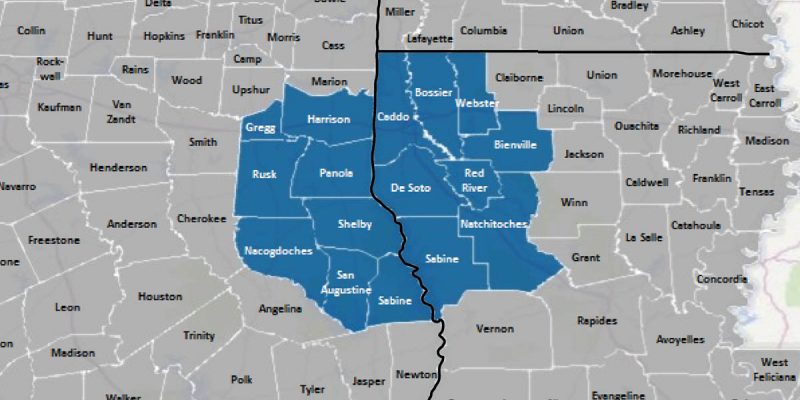The oil and gas industry could not be more diverse in Louisiana. In south Louisiana, in particular, the industry is experiencing historically low and stagnant rig growth, while the rest of the country sees a resurgence in rig activity. In northwest Louisiana, there is a glimmer of hope for the oil and gas sector, and that driving force is the Haynesville Shale.
The Haynesville Shale formation is a layer of sedimentary rock situated more than 10,000 feet below the surface and stretches from northwest Louisiana to parts of eastern Texas and also grabs the southwest part of Arkansas. The formation covers an area of approximately 9,000 squares miles and averages between 200 and 300 feet in thickness. It accounts for the third largest shale play with the potential of holding nearly 500 trillion cubic feet of gas.
At one point in time, this formation was thought to be too financially burdensome to explore, but with advances in hydraulic fracturing, directional drilling, and a spike in energy costs, companies began to explore. What they found was vast amounts of recoverable natural gas known as shale gas.
This discovery would eventually lead to the Haynesville Shale boom between 2008 and 2010. It was estimated that during 2009, approximately $10.6 billion in new business sales, nearly $5.7 billion in household earnings, and nearly 58,000 new jobs were created.
Unfortunately, in recent years, the Haynesville has been pushed out of the way in favor of more low-cost plays such as the Marcellus Shale in West Virginia, Pennsylvania, and New York areas, and Utica Shale in Quebec. Due to the northeast’s lack of pipeline infrastructure and their shut-in production, the Haynesville is becoming more attractive again. Doug Lawler, CEO of Chesapeake, said it best, “[The Haynesville] was largely written off by industry two to three years ago, but it has reemerged stronger than ever.”
Louisiana’s access to the gulf, abundance of pipelines and processing plants, along with the industry’s advancements in drilling technology, has led to a resurgence in the Haynesville Shale. Just last March output from Haynesville fell to a six year low. Production in this formation will now climb for the seventh straight month in June, reaching the highest since October 2014.
The infrastructure needed to export and process the natural gas produced from the Haynesville is contingent upon economic growth in Louisiana. As of January 2017, there were six LNG Export terminals approved, two of which are currently under construction. Even more recently, Venture Global announced an $8.5 billion LNG complex, G2 LNG is planning for an $11 billion natural gas facility, Magnolia LNG announced a planned $3.45 billion facility, and Cheniere shipped over 100 cargoes of domestic LNG starting back in February.
As stated in a Forbes article, “Louisiana [has] an underrated edge because oil/gas production is ingrained in the culture.” The Haynesville Shale was once a shale play left for dead, but now we are seeing the reemergence that could completely change the game for Louisiana. This culture of oil and gas production that hailed from generations past must be realized. This culture and tradition must be carried on for decades to come for the sake of Louisiana.
Advertisement
Advertisement

